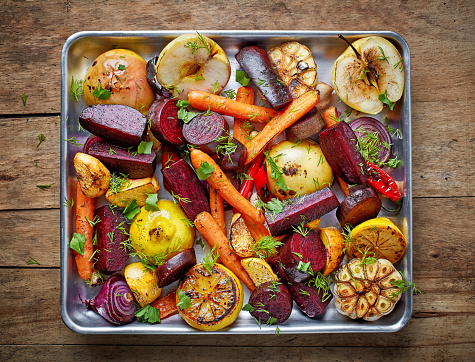How to Know Which Oil to Cook With
Article posted in: Lifestyle
Oils are fats, but they can play a valuable role in your healthy diet. They bring out the flavor in many foods and help make your meals more satisfying to your appetite. More important, your body needs healthy fats to efficiently absorb other nutrients from food. There are so many oils to choose from you may be wondering what the differences are and how to pick the right one for your needs. Let’s start with this: All oils contain saturated, polyunsaturated and monounsaturated fatty acids–they are classified based on which of the three types of fats they have in the highest concentration. The proportion of each type of fat affects both how the oil works in the kitchen and in your body. Here are eight widely available oils and what you need to know to use them in your meals:
CANOLA
Key Facts: Pressed from the seeds of the rape plant, canola oil is primarily monounsaturated, so it helps inhibit the production of bad cholesterol and protects your heart.
Best For: Canola oil is light enough in flavor to be used in salad dressings, but it holds up under high temperatures, so it works well for sautéing or roasting vegetables.
OLIVE
Key Facts: The best quality olive oil is sold as “extra-virgin” because it is the first, unrefined pressing from raw olives. It is loaded with antioxidants called polyphenols that protect your heart health. All types of olive oil are high in monounsaturated fats, which help your body maintain balanced insulin levels and blood sugar, according to the Mayo Clinic.
Best For: Olive oil has a distinct fruity taste that adds rich flavor to your food, but heating it to high temperatures can spoil its flavor and diminish its nutrients. Olive oil is ideally used uncooked in vinaigrette dressing or in toppings such as pesto or tapenade.
PEANUT
Key Facts: While peanut oil is primarily healthy monounsaturated fats, it is higher than most other types in calories and saturated fats. Peanut oil is a rich source of vitamin E, an essential antioxidant that can protect your body from diseases, including cancer.
Best For: Peanut oil has a distinct nutty taste, so it can add desirable flavor or overpower other foods. It tolerates very high temperatures, so it’s often used for stir-fries and for deep-frying.
SAFFLOWER
Key Facts: Safflower oil comes in two varieties: High-oleic safflower oil has mostly monounsaturated fats, while high-linoleic safflower oil has more polyunsaturated.
Best For: Safflower oil is nearly flavorless, so it works whenever you need an oil that won’t affect the taste of other ingredients. Use high-linoleic safflower oil uncooked and heat-tolerant high-oleic safflower oil for frying or baking.
SESAME
Key Facts: Sesame oil’s rich nutty flavor adds an authentic taste to many Asian dishes. It’s a healthy source of vitamin E–just 2 tablespoons contains 75 percent of the recommended daily allowance for adults.
Best For: Drizzle toasted sesame oil on noodle or vegetable dishes after they’re finished cooking. Include light or refined sesame oil in marinades or glazes for grilled fish and other seafood.
AVOCADO
Key Facts: Though avocado oil is relatively high in saturated fats, it’s also loaded with monounsaturated fats. Avocado oil tends to be more expensive than most other kinds of oil, so you’ll want to use it sparingly.
Best For: The rich flavor makes avocado oil an effective substitute for butter in baked goods. It tolerates very high temperatures, so you can use it to saute or grill vegetables. It also tastes great in sauces such as aioli or as a light topping to popcorn.
COCONUT
Key Facts: Coconut oil is solid at room temperature, but begins to liquefy at around 80 degrees F. Virgin coconut oil has a pronounced flavor and aroma, while the taste and scent of refined coconut oil is more subdued.
Best For: A spoonful of coconut oil in oatmeal, rice, or other whole grain dishes adds a taste of the tropics. Coat chicken or sweet potatoes with coconut oil before roasting or grilling. With its high heat tolerance, coconut oil works well when pan-searing scallops or shrimp.
SOYBEAN
Key Facts: Soybean oil, sometimes labeled as “vegetable oil,” is often hydrogenated to increase its shelf life. That process turns the oil into trans fats, which increase the artery-clogging bad cholesterol (LDL) in your body. Avoid hydrogenated oils and products containing them.
You Can Find it In: Because it’s flavor is so light and it tolerates very high temperatures, soybean oil is a popular choice for baking. It also works well when searing or browning meats.















